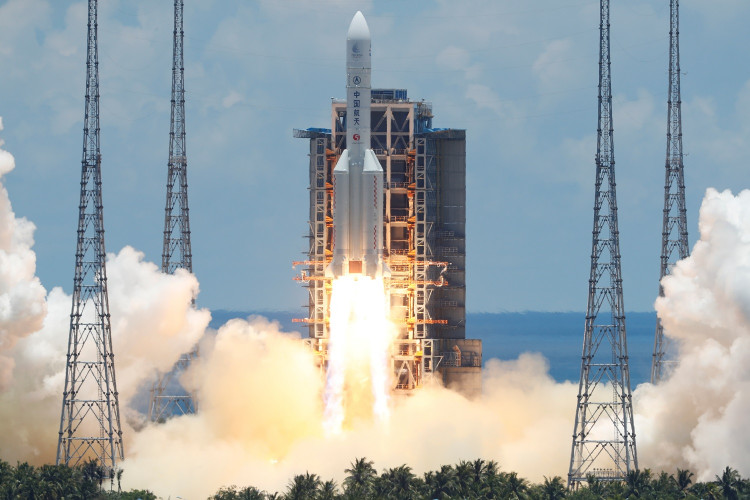China's Chang'e 4 moon rover and lander have finished their tasks for a 20th lunar day on the far side of the moon.
Both the Yutu 2 rover and its partner lander resumed their activities on July 14 in the Von Karman crater on the lunar far side. The lander powered down July 26 at 10:20 p.m. EDT (0220 GMT July 27), with Yutu 2 having already gone into a dormant state about 10 hours earlier, at 12:34 p.m. EDT (1634 GMT).
According to the China Lunar Exploration Program (CLEP) Yutu 2 continued on its journey to the northwest of the lander. The rover covered 90 feet (27.64 meters) during the lunar day to make a total of 1,610 feet (490.9 m) of roving since setting down on the far side of the moon in January 2019.
CLEP has reported that all of Chang'e 4's instruments, including a spectrometer for analyzing the composition of the moon and a low-frequency astronomy payload on the lander are working well.
Yutu 2 on the previous lunar day observed a small container that contains a reflective material at its center, Our Space reported. It turned out to be an impact melt glass, a "dark greenish and glistening impact melt breccia" on the floor of the Von Karman crater on the far side of the Moon.
Yutu 2's ground penetration radar, one of its useful science instruments, has also been used to provide a first deep look below Von Kármán crater in a paper published July 9 in the journal Nature Communications.
Data from the instrument revealed that buried ejecta from major impacts is covered by at least four layers of distinct lava flows. The data provides direct evidence of multiple lava-infilling events, likely occurring during the Imbrium epoch around 3,500 million years ago.
Yutu 2's discoveries are being used by planetary scientists to uncover the history of Von Karman crater, suggesting which impact events may have created particular subsurface strata.
China's historic moon mission, known as Chang'e 4, is one of the nation's crowning achievements. Last year in January, the China National Space Agency (CNSA) successfully landed a rover to the far side of the moon - a first for mankind.
On July 23, the Tianwen-1 Mars mission took off via a Long March 5 rocket that blasted off from the Wenchang Satellite Launch Center in China. It will reach the Red Planet in February 2021, at the same time as NASA's Perseverance rover and the United Arab Emirates' Hope orbiter.






